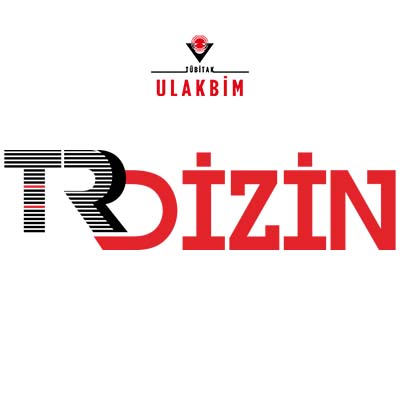The Impact of Social Media Use on Food Choices
DOI:
https://doi.org/10.63556/ankad.v9i2.235Keywords:
social media, food, food choiceAbstract
Abstract
Social media refers to a communication method used to facilitate social interaction on internet-based sites. With the increase in the use and duration and the advancement and widespread use of technology, there have been changes in people’s lifestyles and, as a result, in their dietary behaviours. The current research aims to determine the effect of social media use on food selectivity. The population consisted of 4,447,327 adults residing in the province of Ankara. As it was not possible to reach the entire population due to its size, a sample was taken from the population. Yamane’s (2001) formula was used to determine the sample size. Accordingly, the sample size was calculated as 384, and the study was conducted on 388 adults. The hypotheses were tested using t-test, ANOVA, and correlation tests in the Statistical Package for Social Sciences. According to the analysis results, the continuity of social media use had a negative effect on the variables of food diversity, food avoidance, and avoidance of different tastes, while social media use competence had a significant positive effect on the variables of food diversity, food avoidance, and avoidance of different tastes. It is suggested that social media is important in shaping the dietary behaviour of individuals due to the effects mentioned above.
References
Akyürek, M. İ. (2020). Lise öğrencilerinin sosyal medya kullanımı ve sosyal medyaya ilişkin tutumları. Uşak Üniversitesi Sosyal Bilimler Dergisi, 13(1), 58-92.
Alnjadat, R., Hmaidi, M. M., Samha, T. E., Kilani, M. M., & Hasswan, A. M. (2019). Gender variations in social media usage and academic performance among the students of University of Sharjah. Journal of Taibah University medical sciences, 14(4), 390-394.
Anderson, J. C. & Gerbing, D. W. (1988). Structural equation modeling in practice: A review and recommended two-step approach. Psychological Bulletin, 103(3), 411–423.
Andreassen, C. S. (2015). Online social network site addiction: A comprehensive review. Current Addiction Reports, 2, 175–184.
Andreassen, C. S., Pallesen, S., & Griffiths, M. D. (2017). The relationship between addictive use of social media, narcissism, and self-esteem: Findings from a large national survey. Addictive behaviors, 64, 287-293.
Bagozzi, R. P., & Yi, Y. (1988). On the evaluation of structural equation models. Journal of the Academy of Marketing Science, 16 (1), 74–94.
Barakazı, M. (2023). Smart gastronomy tourism applications. International Academic Research and Reviews in Social, Human and Administrative Sciences.
Baykara, F., &Yinal, A. (2023). Use of social media for promotional purposes in tourism: The example of The Ministry of Tourism and Environment of The Turkish Republic of Northern Cyprus. The Online Journal of New Horizons in Education- January, 13(1), 60-66.
Bölükbaş, R. (2024). Gastronomi turizmi ve sosyal medyaya ilişkin sistematik bir literatür taraması. Uluslararası Güncel Turizm Araştırmaları Dergisi, 8(2), 132-139.
Cabrera, L. F., Ferrada, P., Mayol, J., Mendoza, A. C., Herrera, G., Pedraza, M., & Sanchez, S. (2020). Impact of social media on the continuous education of the general surgeon, a new experience,@ Cirbosque: A Latin American example. Surgery, 167(6), 890-894.
Chau, M. M., Burgermaster, M., & Mamykina, L. (2018). The use of social media in nutrition interventions for adolescents and young adults—a systematic review. International Journal of Medical Informatics, 120, 77–91. https://doi.org/10.1016/j. ijmedinf.2018.10.001
Coates, A. E., Hardman, C. A., Halford, J. C., Christiansen, P., & Boyland, E. J. (2019). Social media influencer marketing and children’s food intake: a randomized trial. Pediatrics, 143(4).
Çam, E., & Isbulan, O. (2012). A new addiction for teacher candidates: Social networks. The Turkish Online Journal of Education Technology, 11, 14–19.
Deniz, L., & Tutgun-Ünal, A. (2019). Sosyal medya çağında kuşakların sosyal medya kullanımı ve değerlerine yönelik bir dizi ölçek geliştirme çalışması. OPUS International Journal of Society Researches, 11(18), 1025-1057.
Duran, S., Çetinbaş, A., Başaran, T., Kara, A., Elgün, B., & Keklik, N. (2019). Üniversite öğrencilerinde stres ve sosyal medya kullanımının yeme davranışları üzerine etkisi. Eurasian Journal of Family Medicine, 8(4), 149-154.
Özkaya, F. D., & Bölükbaş, R. (2021). Türk televizyonlarında yayınlanan yemek programlarında gözlemlenen gıda güvenliği davranışı. Journal of Tourism & Gastronomy Studies, 9(Special Issue 5), 347-354.
Fardouly, J., & Vartanian, L. R. (2015). Negative comparisons about one's appearance mediate the relationship between Facebook usage and body image concerns. Body image, 12, 82-88.
Griffiths, M. D., Kuss, D. J., & Demetrovics, Z. (2014). Social networking addiction: An overview of preliminary findings. In K. P. Rosenberg, & L. C. Feder (Eds.), Behavioral addictions: Criteria, evidence, and treatment (pp. 119–141). London, UK: Academic Press.
Hair, J. F., Black, W. C., Babin, B. J., Anderson, R. E., & Tatham, R. L. (2005). Multivariate data analysis (6th ed.). New Jersey: Prentice Hall.
Hamurcu, P., Şahin, İ. N., & Çelik, A. (2023). Yetişkin seçici yeme ölçeği’nin Türkçe uyarlamasının geçerlilik ve güvenilirlik çalışması. Adnan Menderes Üniversitesi Sağlık Bilimleri Fakültesi Dergisi, 7(1), 183-197.
Hanna, E., Ward, L. M., Seabrook, R. C., Jerald, M., Reed, L., Giaccardi, S., & Lippman, J. R. (2017). Contributions of social comparison and self-objectification in mediating associations between Facebook use and emergent adults' psychological well-being. Cyberpsychology, Behavior, and Social Networking, 20(3), 172-179.
Hawks, J. R., Madanat, H., Walsh-Buhi, E. R., Hartman, S., Nara, A., Strong, D., et al. (2020). Narrative review of social media as a research tool for diet and weight loss. Computers in Human Behavior, 111, 106426. https://doi.org/10.1016/j. chb.2020.106426
Hruska, J., & Maresova, P. (2020). Use of social media platforms among adults in the United States—behavior on social media. Societies, 10(1), 27. http://dx.doi.org/10.3390/soc10010027
Hsu, M. H., Chang, C. M., Lin, H. C., & Lin, Y. W. (2015). Determinants of continued use of social media: the perspectives of uses and gratifications theory and perceived interactivity.
Kabaran, S., & Mercanlıgil, S. M. (2013). Adolesan dönem besin seçimlerini hangi faktörler etkiliyor?. Güncel pediatri, 11(3), 121-127.
Klassen, K. M., Douglass, C. H., Brennan, L., Truby, H., & Lim, M. S. C. (2018). Social media use for nutrition outcomes in young adults: A mixed-methods systematic review. International Journal of Behavioral Nutrition and Physical Activity, 15, https://doi.org/10.1186/s12966-018-0696-y
Kucharczuk, A. J., Oliver, T. L., & Dowdell, E. B. (2022). Social media’s influence on adolescents’ food choices: A mixed studies systematic literature review. Appetite, 168, 105765. https://doi.org/10.1016/j.appet.2021.105765
Manago, A. M., Ward, L. M., Lemm, K. M., Reed, L., & Seabrook, R. (2015). Facebook involvement, objectified body consciousness, body shame, and sexual assertiveness in college women and men. Sex roles, 72, 1-14.
Misra, A., Dinh, T. D., & Ewe, S. Y. (2024). The more followers the better? The impact of food influencers on consumer behaviour in the social media context. British Food Journal, 126(12), 4018-4035.
Murphy, G., Corcoran, C., Tatlow-Golden, M., Boyland, E., & Rooney, B. (2020). See, like, share, remember: Adolescents’ responses to unhealthy-, healthy- and non-food advertising in social media. International Journal of Environmental Research and Public Health, 17(7), 2181. https://doi.org/10.3390/ijerph17072181
Nord, J. H., de Juana Espinosa, S., Paliszkiewicz, J., & Mądra-Sawicka, M. (2020). Do technology and social media preferences differ with age? A study of the use of social technologies for business purposes in Spain. Journal of Computer Information Systems.
Nunnally, J. C., & Bernstein, I. H. (1994). Psychometric theory (3rd ed.). New York, NY: McGraw-Hill.
Özhasar, Y., Oğuz, Y. E., & Yılmaz, V. (2020). Instagram bağımlılığının tatil satın alma niyetine etkisi: esogü turizm fakültesi öğrencileri örneği. Safran Kültür ve Turizm Araştırmaları Dergisi, 3(1), 39-55.
Rini, L., Schouteten, J. J., Faber, I., Frøst, M. B., Perez-Cueto, F. J., & De Steur, H. (2024). Social media and food consumer behavior: A systematic review. Trends in Food Science & Technology, 143, 104290.
Rounsefell, K., Gibson, S., McLean, S., Blair, M., Molenaar, A., Brennan, L., et al. (2020). Social media, body image and food choices in healthy young adults: A mixed methods systematic review. Nutrition and Dietetics, 77(1), 19–40. https://doi.org/ 10.1111/1747-0080.12581
Rutsaert, P., Regan, Á., Pieniak, Z., McConnon, Á., Moss, A., Wall, P., & Verbeke, W. (2013). The use of social media in food risk and benefit communication. Trends in Food Science & Technology, 30(1), 84-91.
Ryan, T., Chester, A., Reece, J., & Xenos, S. (2014). The uses and abuses of Facebook: A review of Facebook addiction. Journal of Behavioral Addictions, 3, 133–148.
Sampasa-Kanyinga, H., Chaput, J. P., & Hamilton, H. A. (2015). Associations between the use of social networking sites and unhealthy eating behaviours and excess body weight in adolescents. British Journal of Nutrition, 114(11), 1941-1947.
Simeone, M., & Scarpato, D. (2020). Sustainable consumption: How does social media affect food choices?. Journal of Cleaner Production, 277, 124036.
Statista (2023a), “Influencer marketing worldwide - statistics & facts”, Statista, available at: https://www.statista.com/topics/2496/influence-marketing/
Statista (2023b), Instagram, Snapchat, and TikTok: Number of Users in the United States 2020-2023, Statista, available at: https://www.statista.com/statistics/293771/number-of-us-instagram-users/
Su, W., Han, X., Yu, H., Wu, Y., & Potenza, M. N. (2020). Do men become addicted to internet gaming and women to social media? A meta-analysis examining gender-related differences in specific internet addiction. Computers in Human Behavior, 113, 106480.
Tobey, L. N., & Manore, M. M. (2014). Social media and nutrition education: the food hero experience. Journal of nutrition education and behavior, 46(2), 128-133.
TÜİK (2024) https://data.tuik.gov.tr/Bulten/Index?p=49685
Twenge, J. M., & Martin, G. N. (2020). Gender differences in associations between digital media use and psychological well-being: Evidence from three large datasets. Journal of adolescence, 79, 91-102.
Vaterlaus, J. M., Patten, E. V., Roche, C., & Young, J. A. (2015). Gettinghealthy: The perceived influence of social media on young adult health behaviors. Computers in Human Behavior, 45, 151-157.
Williams, G., Hamm, M. P., Shulhan, J., Vandermeer, B., & Hartling, L. (2014). Social media interventions for diet and exercise behaviours: A systematic review and meta analysis of randomised controlled trials. BMJ Open, 4(2), https:// doi.org/10.1136/bmjopen-2013-003926
Yamane, T. (2001). Temel örnekleme yöntemleri, (Çev. A. Esin, C. Aydın, M. A. Bakır & E. Gürbüsel). İstanbul: Literatür Yayıncılık.
Zorlu, Ö., & Candan, T. (2023). The impact of social media influencers on destination preferences: A cross- generation comparison. Journal of Tourism Leisure and Hospitality, 5(1), 53– 61.
Downloads
Published
How to Cite
Issue
Section
License
Copyright (c) 2025 Journal of Anatolian Cultural Research (JANCR)

This work is licensed under a Creative Commons Attribution-NonCommercial 4.0 International License.










